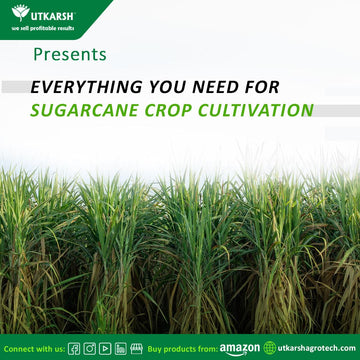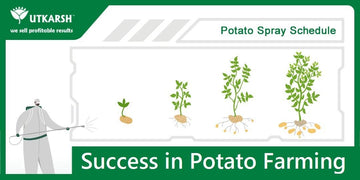Agriculture is India’s leading sector, and it supports a significant proportion of individuals. India’s weather, topography, and soil have a number of desirable properties. As a consequence, the country produces a diversified range of crops. Rice, Wheat, and lentils are among the topmost food grains grown in India.
India’s agriculture states are producing high-quality agricultural goods and other food supplies. The Indian agriculture economy is expanding rapidly and continues to contribute to global trade. India’s grocery and food market is the world’s sixth-largest, representing 70% of overall sales. Food production and consumption patterns are transforming. In India, there has been an increase in population, income, rural/urban mobility, and extension of rural per capita productivity over many years. Demand for food increased as a result of the enhancement of all of these elements.
Let us take a look at the top 10 Indian crops and why India is leading worldwide:
-
Rice
Rice is India’s most popular food grain. The country is ranked second in the world for rice production. Rice is grown on around 34% of the country’s total cropped land. Rice cultivation accounts for 42 percent of the country’s total food crop production.

It is critical for rice cultivation that the producing fields get an annual average of 125 cm of precipitation. It is also important for the average temperature of the area to remain at 23 degrees Celsius. Rice is grown in India’s eastern and western coastline areas, Northeast India, and the Ganga’s drainage basin.
Major rice-growing states in India: West Bengal, Punjab & Uttar Pradesh
-
Wheat
Wheat is the second most significant food grain grown in India. Wheat is best grown during the Rabi season. In India, the Green Revolution set the door for a significant increase in wheat output. The production of the second most significant food crop has increased dramatically since the revolution. Better seeds, proper water utilization, and manures were all factors that contributed to enhanced wheat yield.
Wheat is farmed in India in areas with an average annual precipitation of 75 cm. The soil in the area should also be productive.
Major wheat-growing states in India: Uttar Pradesh, Punjab & Haryana.
-
Sugarcane
Sugarcane directly or indirectly employs over a million people while also contributing significantly to the national budget. Sugar cane was first discovered in New Guinea, where it has been cultivated for thousands of years. Sugar cane plants expanded over Asia and the Indian subcontinent as a result of human migration.

Sugarcane is one of India’s most popular crops and refers to a group of tall perennial grasses in the genus Saccharum, tribe Andropogoneae, that are used to make sugar. The plants are 2–6 m tall, with strong, jointed, fibrous stalks that collect sucrose in the stalk internodes. Weather conditions prevailing during the various crop-growth sub-periods have a significant impact on sugarcane productivity and juice quality.
Major sugarcane-growing states in India: Uttar Pradesh, Maharasthra & Odisha.
-
Jute
Jute is one of eastern India’s most important cash crops. It is a hot and humid climate crop that is exported as both items and raw fibre. Gunny bags, ropes, hessian, carpets, rugs, and clothing, as well as tarpaulins, upholstery, strings, carpets, and decorating items, are all made from jute. After cotton, jute is in high demand. Jute is in high demand because of its low cost, softness, strength, length, shine, and consistency. These excellent properties have made this fibre quite popular on the market.
Jute grows best in a hot, humid area with temperatures ranging from 24 to 37 degrees Celsius. However, the ideal temperature is around 34 degrees Celsius.
Major jute-growing states in India: West Bengal, Assam & Bihar.
-
Maize/Corn
Maize is one of the most adaptable developing crops, able to thrive in a wide range of agro-climatic conditions. Maize is recognized as the “Queen of Cereals” around the world because it has the highest genetic production potential of all cereals. In India, maize makes up almost 9% of the country’s food supply. It is used as a raw material in hundreds of industrial and other goods.

Major jute-growing states in India: Karnataka, Andhra Pradesh & Rajasthan.
-
Pulses
Dal, a low-cost source of plant protein, is made from pulses. These are ingested for their body-building effects, as they include a variety of amino acids. These have therapeutic qualities as well. In India and around the world, a variety of pulse crops are grown. Gram, Pigeonpea, Lentil, Fieldpeas, and other crops are among the most important.

Pulse crops are grown during the agricultural year’s Kharif, Rabi, and Zaid seasons. Rabi crops require a mild cold climate during the sowing phase, a cold climate during vegetative to pod development, and a warm climate during maturity and harvesting. Kharif pulse crops, meanwhile, require a warm temperature throughout their whole life cycle, from seeding to harvesting.
Major pulse-growing states in India: Madhya Pradesh, Uttar Pradesh & Rajasthan.
-
Cotton
Cotton is a Kharif crop that is used in the clothing and textile industries. It takes 6-8 months for this Kharif crop to develop. Crops are harvested and sown at different times in different places, depending on the climate. It’s planted in April-May and harvested in December-January to avoid damage from winter frost.

This fibre is long, lustrous, and extremely fine. This fibre aids in the production of high-quality textiles. Long-staple cotton is the most widely used cotton in India, and it is also the cheapest in terms of Kapas. In India, long-staple cotton accounts for about half of all cotton production.
Major cotton-growing states in India: Punjab, Tamil Nadu & Gujarat.
-
Coffee
Since ancient times, India has been a major coffee grower. According to legend, Baba Budan, an Indian hermit, took seven coffee beans from Yemen and planted them in Chandragiri, a hilly location in the Indian state of Karnataka.

Since then, coffee has been an inextricable element of Indian culture. Coffee, along with other plantation crops, has made a considerable contribution to the Indian economy over the last 50 years. In India, coffee is traditionally grown in the Western Ghats, which stretch over Karnataka, Kerala, and Tamil Nadu, with Karnataka accounting for roughly 70% of total coffee output.
Major coffee-growing states in India: Karnataka, Kerala & Tamil Nadu.
-
Tea
India is now the world’s second-largest tea grower, trailing only China.
Tea is popular in India, and you may find a nice corner with this drink in your hand anywhere from a roadside hut to a high-end mall. India consumes 3/4 of the total tea produced in the world. The Indian tea business is primarily driven by rising demand for tea due to its aroma and quality. Assam tea (highest cultivation), Darjeeling tea (superior grade tea), and Nilgiri tea are the three types of tea found in India (subtle and gentle flavors).

Because of the geographical advantages, the strategic investments in equipment, and technological advancement, the tea produced in India is among the best globally.
Major tea-growing states in India: Assam, West Bengal & Tamil Nadu.
-
Spices
Spices have been used in many different civilizations and places of the world since prehistoric times. For thousands of years, they have been utilized as food, medicinal, and flavoring. But where in India are spices grown? The answer varies depending on the sort of spice in question.

India is a nation of spices and has long been known for its delectable cuisine. Some of the best spices were found by our forefathers, while others were traded and introduced to India. These spices are the reason why India, despite being one country, has so varied cuisines. The cuisine you’ll find in South India is completely different from what you’ll find in the north.
Major spices-growing states in India: Kerala, Karnataka & Rajasthan.
Utkarsh Agrochem
Utkarsh Agrochem aims to help and assist you with all your requirements and doubts regarding any Cultivation or any type of farming needs.
Do visit us for any queries, guidance, or requirements, for starting or setting up your plantation. Utkarsh Agrochem is your one-stop destination for all your farming needs.
Utkarsh has launched 1-Acre Kits of Banana, Papaya, Gourds, Ginger, Okra & many more
Simply order the number of 1-Acre-Kits as per the size of your farm and get the entire range of requirements covered in it.
Simply select the kit, that’s it. => Lesser Cost & Higher Profitability.
To shop a Farming kit Click on this: https://utkarshagro.com/product-category/kits/
You can easily get our products on amazon and on our website.
All the products mentioned in this blog can be found on Amazon as well as the website of Utkarsh. Also, the method of application and the required dose can be easily found on our Website – Utkarshagro.com/shop.
उत्कर्ष के संग आपकी हर फसल होगी सफल।
Available on UtkarshAgro.com | Amazon | Flipkart | AgriBegri | Bighaat | Moglix | Agrosiaa | Toolsvila | Agri junction | Krishisuvidha | Ecotika | Shopee | Bazzu.in
Visit Website: https://utkarshagro.com/
𝐂𝐎𝐃 𝐚𝐧𝐝 𝐄𝐌𝐈 𝐨𝐩𝐭𝐢𝐨𝐧𝐬 𝐚𝐫𝐞 𝐧𝐨𝐰 𝐚𝐯𝐚𝐢𝐥𝐚𝐛𝐥𝐞.
May you have the best yield ever! Feel free to contact Utkarsh for any doubts and advice.
If you have any further queries, feel free to reach out to us on 919824133044, +919924864422, +919824300544
Landline: 02621-255972
Visit our website: https://utkarshagro.com/
Email ID: rd@utkarshagro.com
Stay connected with us to learn more tips and tricks. All you have to do is follow us here:
Chat: wa.me/918866543678
Facebook: https://www.facebook.com/utkarshagrochem/
Instagram: https://www.instagram.com/utkarshagrochem/
Twitter: https://twitter.com/UAgrochem
LinkedIn: https://www.linkedin.com/company/utkarsh-agrochem-pvt-ltd/
Pinterest: https://in.pinterest.com/utkarshagrochemsocial/
Written by:
Pinaki Kotecha Poojara
Affiliate Writer with Monkey Ads





